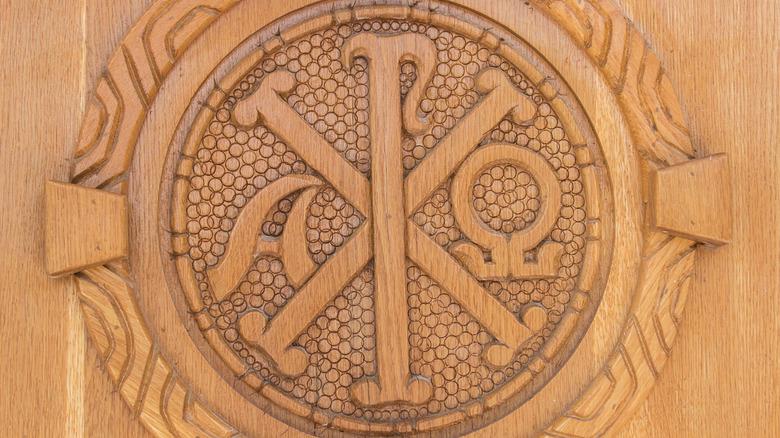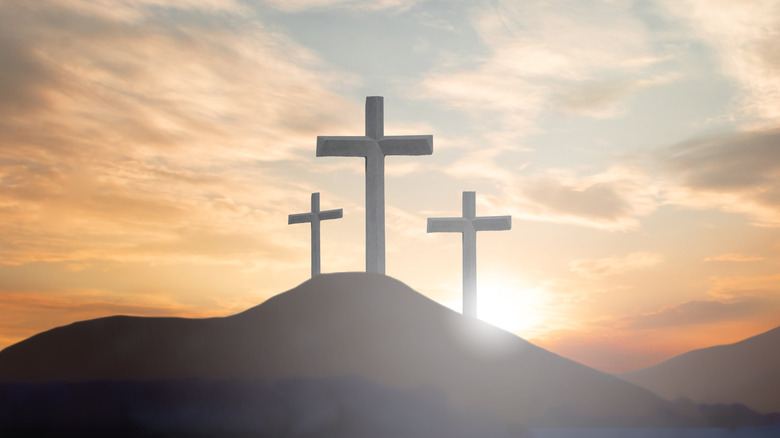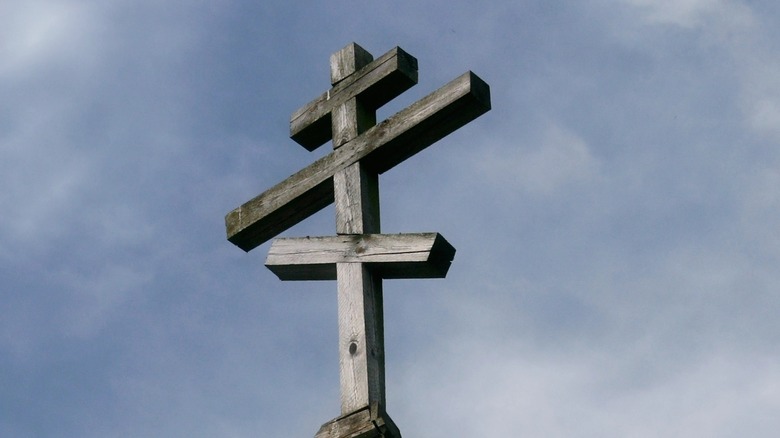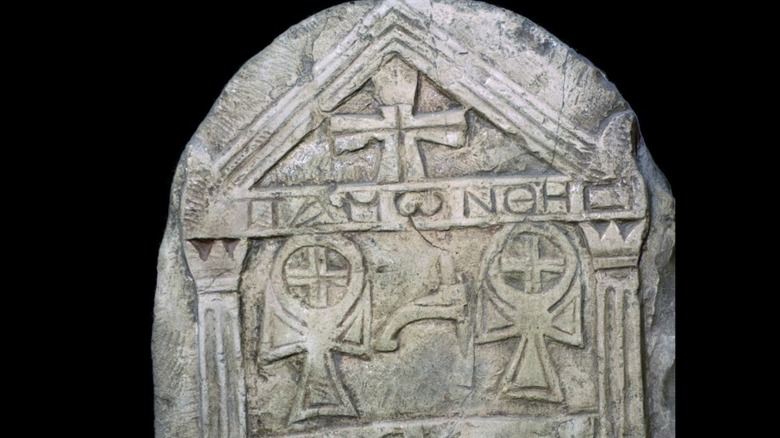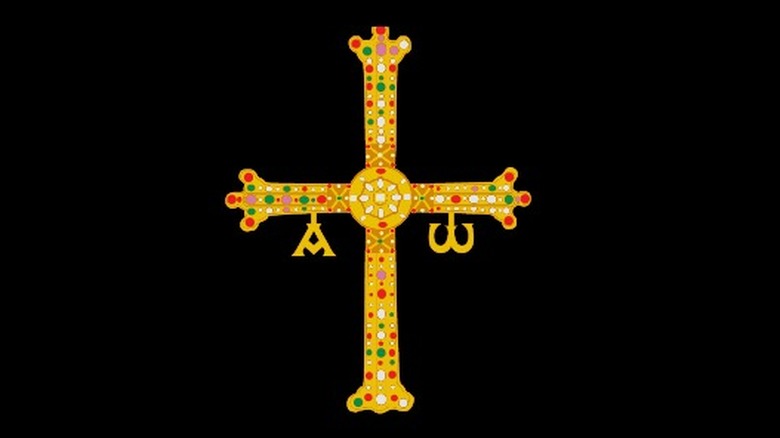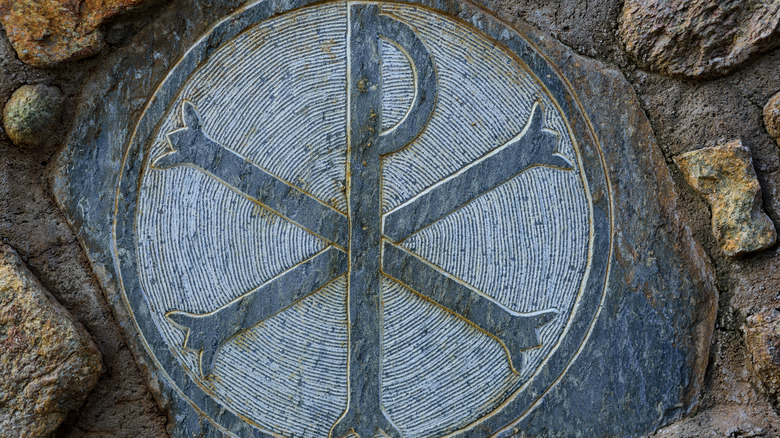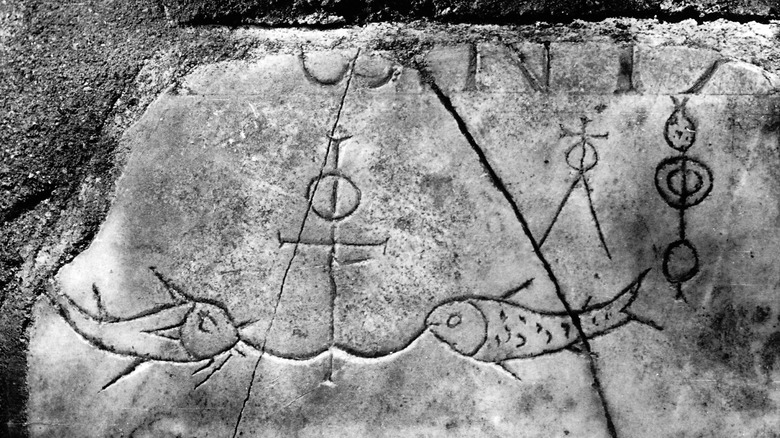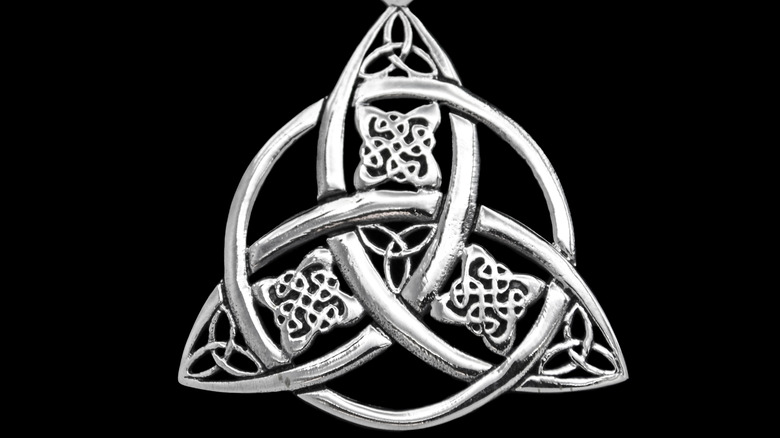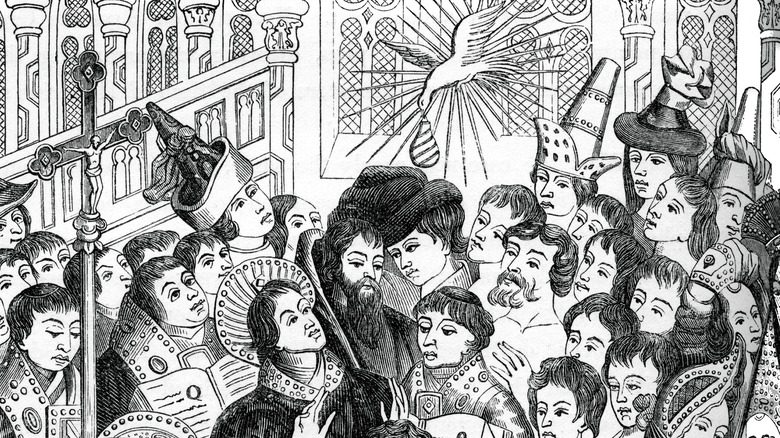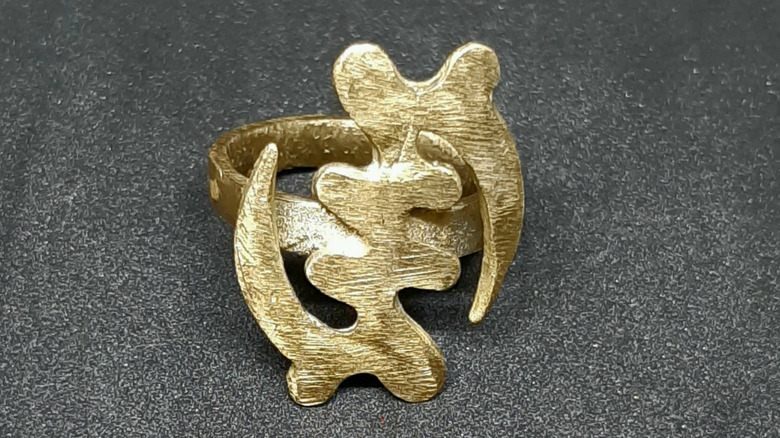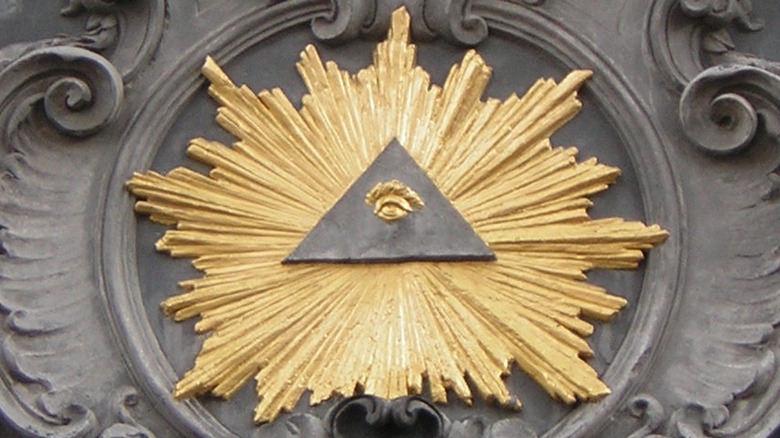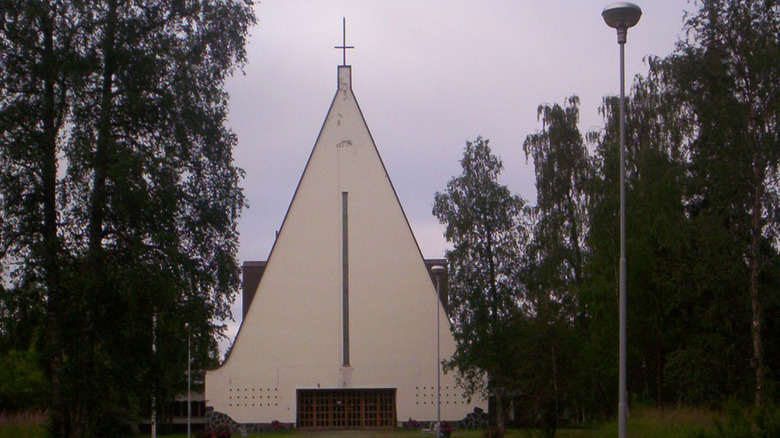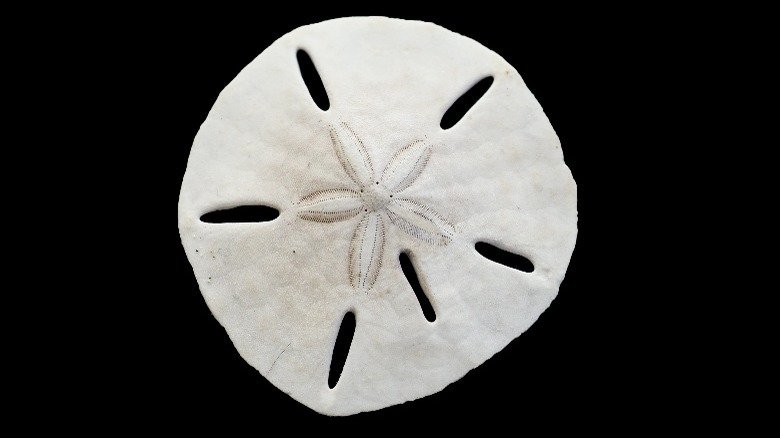Major Christian Symbols Explained
Christianity, like most religions, has a rich inventory of symbols for expressing theological concepts, religious teachings, and aspects of God. Among the most familiar are the cross, the dove, and the Jesus fish, all of which are ubiquitous in the American Christian context.
However, Christian symbolism is far more expansive than just these basics. There are hundreds, if not thousands of different variations on the cross alone that span cultures and eras around the world, contributing to Christianity's rich repertoire of religious art. Meanwhile, Christians globally have often borrowed symbols from their own cultures, usually pagan ones, and baptized them into Christianity, a practice that continues today.
Although Christian symbols, especially the major ones, are easily recognizable, their purposes are often not. This article will explain a host of major Christian symbols as well as some lesser-known ones that, despite their obscurity, give the religion a truly diverse and universal face.
The 'basic' (aka Latin) cross
The basic symbol of Christianity globally is the Latin cross. Jesus carried it and died on it. Christians are called to take it upon themselves both literally and metaphorically and follow Christ in his suffering. There are numerous variations on the Latin cross, but two in particular stand out. One is the crucifix, which depicts Christ crucified, and the other one is a plain cross. Why the difference? It depends how you look at it.
The cross vs. crucifix debate comes down to the Catholic-Protestant divide. According to Catholic Answers, the Eucharist and Jesus' sacrifice are the centerpieces of the Catholic Mass. This emphasis is reflected in the recommendation that believers wear Jesus crucified. According to the Cathedral of the Immaculate Conception in Springfield, Illinois the symbol is a reminder of Jesus' sacrifice, love, and call to follow him till death if necessary.
Protestants believe that Catholics place too much emphasis on Christ's death while leaving out the fact that he rose from the dead three days later. The United Methodist Church sums up the Protestant position. Protestants wear empty crosses to emphasize the resurrection. It is a reminder that despite dying, Jesus defeated death and gave his followers eternal life, which in retrospect, is similar to the Catholic position, just from a different angle. Additionally, since the crucifix is so intricately tied with Catholicism, many Protestants refuse it out of principle and as a rejection of perceived idolatry. After all, the very act of being Protestant originally was a protest against all things Catholic.
The Russian Cross
According to St. Michael's Abbey in Colorado, Jesus was crucified alongside two thieves. St. Dismas repented of his sins and begged Jesus for forgiveness and a place in heaven. The other, Gestas, mocked Christ's suffering and presumably ended up in Hell. Incredibly, this story is beautifully encapsulated on the Russian three-bar cross commonly associated with Eastern Orthodoxy. These bars tell the story of the thieves' decisions and their fates.
There are two extra bars on the Russian cross. The smaller one above Jesus' head is just a sign that reads "Jesus of Nazareth, King of the Jews." The bottom bar is the important one for the purposes of the story. According to the Church of the Nativity in Erie Pennsylvania, the bottom bar is interpreted as Christ's footrest, even though it may not have actually been there. However, it was also the scale of Christ's judgement. The bar points upward towards Jesus' right towards St. Dismas. However, it also points downward towards Jesus' left, where Gestas was.
This beam's direction tells the fate of the thieves. St. Dismas' repentance elevated him upward towards heaven, as Jesus promised, while Gestas' pride and blasphemy dragged him down to hell. The Russian cross is a lovely example of how rich biblical narratives can be subtly conveyed through the addition of a symbol or two. So typical of Christianity, where even the superfluous-seeming details are there for a reason!
The Ankh
The Egyptian ankh, according to Britannica, consists of a cross with a loop above the beam symbolizing the eternity of life. In the ancient Egyptian language, it was a hieroglyph that stood for the Egyptian word for life. How did this thoroughly pagan symbol come to appear in churches? Like most other Christian symbols, it was adopted as Christianity won new converts locally, in this case, in Egypt.
Egyptian religion already had the concepts of afterlife and rebirth. According to the Canadian Museum of History, Egypt itself was "reborn" every year with the Nile flood. This flood was said to result from the tears Isis wept for her dismembered husband Osiris, who was then resurrected. No coincidence then, that the ankh was closely associated with Osiris.
With this in mind, Aleteia notes that Egyptian Christians noticed a resemblance in meaning and form to a Christian symbol called the staurogram. The staurogram symbolizes Christ's resurrection and victory over death. Thus, it was easy to repurpose the ankh as a Christian cross symbolizing Christ's victory over death and the gift of eternal life. Although in the West it is more associated with Afrocentrism and Black nationalism, the Coptic Church continues to use the symbol today, and it can be seen inside churches and on jewelry.
The Alpha and Omega
Legend recounts that in 722, the Visigoth noble Don Pelayo and his band of Asturo-Gothic soldiers defeated a much larger Muslim army and founded the Christian Kingdom of Asturias in Iberia. But this victory was no ordinary one. It resulted from divine intervention after Pelayo submitted to the Cross of Victory, which a hermit gave him as his royal standard. Hanging from the cross beam, as seen on the royal arms, are two Greek letters, the alpha and the omega. Why did the rulers of the Kingdom of Asturias place these on their banners? According to the Book of Revelation, the letters are a stand-in for God and his infiniteness.
The Book of Revelation explicitly refers to Christ/God as the alpha and the omega. These are the first and last letters of the Greek alphabet respectively. The Catholic Encyclopedia notes that Christians generally interpret them to represent the infiniteness of God, who has existed since the beginning (alpha), exists all the way through, and always will to the end (omega). In Western Europe, it was common practice to hang these letters from regalia, crosses, and other jewelry. In the case of Asturias, perhaps they were decorative, although it is not known for certain. But since God's infinite power saved Pelayo from defeat, he or his successors may have considered it worth honoring.
The Chi Rho: Under this sign, you shall conquer!
In 293 AD, the Roman emperor Diocletian split the empire into a tetrarchy of four emperors to make defense, administration, and succession of the overstretched empire smoother. A mere 18 years later, the system failed. By 311 AD, the empire was in yet another civil war. But this one would see Christianity, formerly Rome's favorite whipping boy, triumph, thanks to a sign in the sky that became one of the most famous Christian symbols in history.
This conflict pitted the tetrarchs Constantine and Maxentius against each other. In 312, Constantine marched on Rome to face Maxentius' forces at Milvian bridge. Maxentius outnumbered his opponent 2-1. But he did not account for God's will in his preparation for battle. As Maxentius deployed for battle, Constantine's soldiers appeared bearing a strange symbol consisting of the Greek letters chi and rho (pictured above). According to Roman historian Eusebius (via Early Church History), Constantine saw this sign at noon in the sky, underneath which was the Latin for "Under this sign, you shall conquer." A dream later that night revealed its source. Christ himself appeared to the emperor advising that if his army painted the symbol on their soldiers' shields, he would win.
Jesus had effectively asked Constantine to march under and in his name. The Chi Rho is a symbol of Christ, since the two Greek letters that form it are also the first two letters of the word "Christ" in Greek. Constantine's obedience to divine diktat brought him favor that day, as his forces routed Maxentius' army and left him in sole command of the Western half of the Roman Empire.
The Ichthys
Popularly known in America as the Jesus fish, this symbol is popular among Christians as a bumper or window sticker. Although it may seem tacky, it is not a modern invention. This symbol is among other things, a 2,000-year-old code for persecuted Christians to identify each other in a dangerous world.
The word ichthys simply means "fish" in Greek. But behind this was a hidden meaning. The individual Greek letters form an acronym that reads "Jesus Christ, Son of God, Savior," a declaration of faith for all intents and purposes. According to Christianity Today, persecuted Christians used the symbol to mark secret places of worship especially in catacombs. Christian travelers encountering company drew this symbol to determine if their opposites were fellow believers. Since the fish was a less obvious Christian symbol that was not usually used overtly, unlike the cross, it allowed Christians to hide in plain sight from their persecutors.
Today, the Ichthys is used much the same way as in the past — to identify oneself as a Christian. Although Martin Saunders of Christian Today has criticized it as virtue signaling, Aleteia notes that modern Christians are using the symbol exactly as early Christians did — to signal their faith. But today, it just helps avoid uncomfortable questions about another person's religion rather than protect from persecution.
The Triquetra (Celtic Knot)
The triquetra, as with many other things Celtic, is associated with modern occultist movements and neopagan beliefs such as wicca. This formerly-pagan symbol consists of a knot composed of three overlapping parts that resemble Jesus fish upon closer inspection. Sometimes a circle superimposed over them. The circle shows the innate unity of the three parts, making the triquetra a useful symbol, according to Catholic Exchange, for explaining Christianity's core doctrine of the Trinity.
The Trinity posits that God is three persons in one and one person in three, making the triquetra an ideal representation of this relationship. The three persons of God — Father, Son, and Holy Spirit, are all equal and are all God. The triquetra illustrates this perfectly, as all of the "fish" are made from one thread with no beginning and no end, yet are simultaneously three separate forms.
Admittedly, it is not clear if the symbol was purely aesthetic or carried a trinitarian meaning in the Middle Ages. According to the website of the City of Grove in Oklahoma, the triquetra did not definitely obtain this association with the Trinity until the Celtic revival of the 19th century. Today, it is a beloved symbol among Irish Catholics, whose faith and heritage is neatly summed up in this simple but beautiful design.
The Dove
In 496 AD, the Chronicle of St. Denis records that the pagan Frankish King Clovis faced an Alemannic invasion, so he made a deal with God. If Clovis was victorious, he would become Christian. After defeating his rivals at Tolbiac, he was baptized in Rheims by St. Remi on Christmas Day. During the ceremony, a dove inexplicably came down with a vial of holy oil. For those present, the symbolism was clear. The Holy Spirit had graced the ceremony with its presence, just as it had done at Jesus' baptism.
Now why did the Holy Spirit come as a dove? Matthew 3:16 provides the immediate origin. At Jesus' baptism, the Holy Spirit came upon him like a dove. Because doves are pure white, graceful birds, Judaism, according to Aleteia, recognized them as symbols of God's purity and goodness. Thus, it was the perfect symbol for the Holy Spirit, which like a dove in flight, hovered over the earth. For Clovis, it must have been immensely humbling to have God hand-deliver the oil for anointing him as a new Christian, especially in such a beautiful and graceful form.
The appearance of the Holy Spirit as a dove at Clovis' baptism inspired the conversion of all of the pagan Franks to Catholicism and gave the church a powerful defender. The successor state of the Frankish Kingdom, France, would go on to be the beating heart of Christendom until the French Revolution. For Clovis' faith, France holds the title of the church's eldest daughter.
The Gye Nyame
The Gye Nyame is not a symbol you might immediately associate with Christianity. In fact, most people outside of West Africa have never heard of it. But Christianity, over time, has adopted numerous pagan symbols into its repertoire, and this is one of them. As African Christianity, according to the Washington Post, has grown by leaps and bounds in Ghana and its neighbors, they have turned to their symbol-rich cultures for expressions of the Christian faith.
West African religions traditionally believed in a supreme god. In the Twi language of Ghana, he was called Nyame. The Akan people that speak Twi use a symbol drawn from among many (called Adinkra) to express Nyame's supremacy, which is called the Gye Nyame. The symbol depicts a person inside of a hand. Gye Nyame literally means "except for Nyame” in Twi. Traditionally, this meant that nothing should be feared except for Nyame, who is omnipotent and protects his faithful with his hand.
With the growth of Christianity, Nyame has come to simply mean "God" in Twi, and the Gye Nyame, as a result, has become a symbol of the Christian God. In a deeply religious country such as Ghana, the symbol can be seen everywhere, from clothing to organizational seals. It serves as a reminder to people to remember that one can handle anything life throws at them, as long as they remember that God is above all and protects them like a father.
The Eye of Providence: Masonic or Christian?
According to popular wisdom, this symbol should not belong on this list. The Eye of Providence, also called the All-Seeing Eye, is popularly known as a symbol of anti-clerical and particularly anti-Catholic freemasonry. This symbol appears prominently, for instance, on the US one-dollar bill. But as the George Washington Memorial notes, the symbol itself has biblical origins and before freemasonry arose, was used as a Christian symbol.
The Eye of Providence appears multiple times in the Bible, including in the Book of Sirach. Sirach 23:19 describes the eye of the Lord as "ten thousand times brighter than the sun." This is the aesthetic basis for the eye, which the BBC notes encapsulates God's benevolence towards his faithful. The same article notes that it was combined with the triangle, which was an early Christian symbol of the Trinity, to form the symbol most are familiar with today.
The Eye of Providence found popularity in Christian art during the Late Renaissance. Pontormo's "Supper at Emmaus," for instance, depicts the Eye of Providence hovering over Christ. Another example can be seen on the Aachen Cathedral in Belgium (pictured above). Although the Washington Memorial notes that freemasonry adopted the symbol in the 17th century, it was the French Revolution that popularized it in the 18th. No longer would the symbol depict the Christian God. Instead, it would depict a deity as a "benevolent creator and founder of general laws." Sound familiar?
St. Peter, Satan, and the inverted cross
According to Catholic Answers, popular culture most commonly associates the upside-down cross with Satanism. Thus, if there is any symbol that definitely does not belong on this list, it is this one. Satanism markets itself as an inversion of Christianity, so the cross is turned upside-down in mockery of Christ. But it only acquired this meaning in the 19th century when occultist Eugene Vintras adopted it as his symbol. Before that, it was (and still is) a perfectly good Christian symbol associated with St. Peter.
According to Aleteia, Catholic tradition states that St. Peter was crucified upside-down in Rome, a scene beautifully captured in Caravaggio's 1601 masterpiece. The apostle felt unworthy of dying as Christ had, so he opted to die that way instead. Thus, the inverted cross became associated with Peter and consequently, the papacy, since Catholics consider Peter both the first bishop of Rome and pope.
The symbol's Christian pedigree and association with St. Peter is unmistakable, despite Satanist attempts to appropriate it for themselves. Today, the upside-down cross can be seen inside churches. According to the Vatican newspaper ZENIT (via Eternal Word Television Network) it can also be seen on the papal chair during papal masses. It makes sense that the cross of St. Peter would be associated with the Vatican, the bishopric he founded, but that has not stopped some from claiming otherwise.
The Sand Dollar?!
Sand dollars are flat sea urchins that like to burrow on the ocean floor. But according to Catholic legend, they have a very specific purpose. According to Catholic devotionals such as this one, Jesus left the sand dollar behind as an evangelization tool.
So far, this sounds absurd, right? But the sand dollar carries numerous markings that Christians associate with various characteristics of Jesus or the Holy Spirit. The sand dollar's holes are associated with Jesus' five wounds from the crucifixion. On one side is a floral shape resembling the Easter lily (the Resurrection). On the opposite side the petals resemble the Christmas poinsettia that form a star (the Nativity). What happens if you break a sand dollar? You will see five little doves emerge, a representation of the Holy Spirit, "spreading goodwill and peace."
This little mollusk captures the essence of the purpose of the Christian symbol. Virtually all of these symbols serve to evangelize and spread the word of Christ's love and sacrifice for humanity. As the old cliché goes, a picture tells a thousand words, and these symbols have helped many fulfill the command to go forth and make disciples of all the nations.
